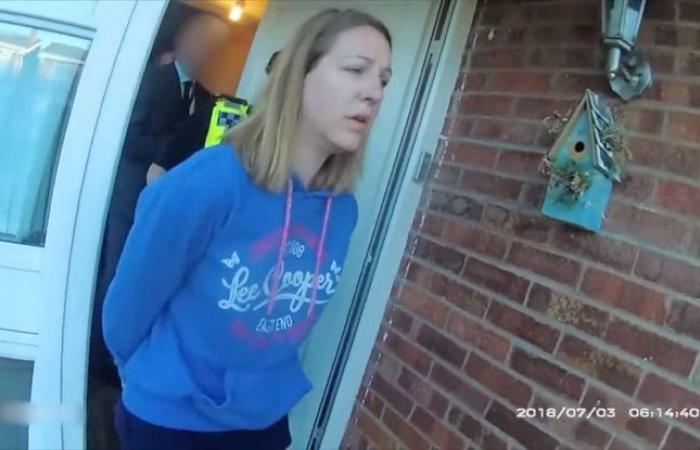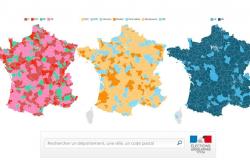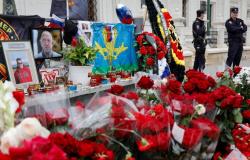AFP
“Treated like waste”: indigenous feminicides, a hidden tragedy in Canada
A mountain of waste swept away by the winds. Below, bodies. For two years, in central Canada, the remains of Native American women have languished in a landfill where a serial killer threw them after murdering them. Morgan Harris, 39, Marcedes Myran, 26, and an unidentified young woman: raped, killed, dismembered and thrown in trash in Winnipeg. Their relatives were unable to bury them, the excavations to find them have still not started. The body of Rebecca Contois, 24, who suffered the same fate, was found in a trash can. This case is the last significant chapter in a long history of violence against indigenous women in Canada: often targets of murderers, they are poorly protected by the authorities accused of paying little attention to their files. Always “put aside by everyone”, says Elle Harris, 19 years old, member of the Long Plain nation, traditional braid and skirt. Her mother, Morgan had a messed up life, she says. Years of homelessness after losing custody of his five children due to his drug addiction. “She was taken like that, as if nothing had happened. I would have liked to see her one more time…” Very close to the Prairie Green landfill in Winnipeg, Elle Harris and her family set up teepees and a sacred fire, red robes and a banner that asks: “What if it was your daughter?” In the cold, the snow, the wind, for months, they have been taking turns in this makeshift camp “to be visible” , said the young girl, “to prove that we are not trash.” But also to get the excavations started. They have been fighting for this for months: by alerting the media, by demonstrating, until a meeting with Canadian Prime Minister Justin Trudeau. An agreement was finally given after the arrival at the end of 2023 of Wab Kinew at the head of this province of Manitoba, the first indigenous person in the history of the country in this type of position. But as the months passed, the waste accumulated, complicating the search. It was in the middle of tons of construction rubble that we had to search. An operation which involves “considerable risks”, explain reports from independent experts, in particular due to exposure to toxic products such as asbestos. This could take years and cost tens of millions of Canadian dollars. Morgan Harris’ family has vowed to stay until his body is removed.- ‘Devastating story’ -No stranger to racist diatribes, serial killer Jeremy Skibicki specifically targeted Indigenous women he met in homeless shelters, prosecutors explained during the trial that began at the end of April. The verdict is expected on July 11. At the time of his arrest, the Minister of Crown-Indigenous Relations at the time, Marc Miller, acknowledged that the case was “the legacy of a devastating history that has repercussions today.” cannot say with confidence that this will not happen again and I think that is a shame.”Indigenous women represent about a quarter of the victims of femicide in Canada, while they constitute less than 4% of the female population , according to official figures. According to these statistics, they are three times more likely to die murdered than non-Indigenous women. The situation is getting worse: in the early 1980s, indigenous women represented only 8% of victims. “Canada is considered a country that defends human rights but there is clearly something wrong in this country “, says Hilda Anderson-Pyrz, an activist who has defended the cause of indigenous women for years. In 2019, after two years of investigation, a national commission went so far as to describe as “genocide” the thousands of murders and disappearances of women members of the First Nations (Dene, Mohawks, Ojibway, Cree and Algonquins…). Isolation and social marginalization, racism, sexism, cultural prejudice: indigenous women face a disproportionately high level of violence due to “actions and inactions of the State which have their roots in colonialism” and “a presumption of superiority” , concluded the commission.- “Road of tears” -The young children of Marcedes Myran do not understand “why their mother is in a landfill” “I don’t know what to answer them,” admits their great-grandmother Donna Bartlett , who raises them alone in her small, cluttered house in an outlying neighborhood of Winnipeg. She was a nice girl, remembers the inexhaustible matriarch on the antics of a child who “liked to make jokes”. “I just want to bring back a piece of her to have with us”, slips the lady of 66 years old with long dyed red hair and a weathered face. “For white women, they would have looked for discharge right away, that’s for sure,” she breathes. It is against this contempt, this “systemic racism” that Gladys Radek has been fighting for years a little more west on the “Road of Tears”. Along this lost strip of land in northern British Columbia, the Pacific Coast province, between 40 and 50 women – and a few men – have disappeared since the 1960s. This road, which links 725 km from Prince Rupert, near Alaska, to Prince George, has become the symbol of indigenous femicide, the tip of the iceberg. But a reality still unknown to the vast majority of Canadians. Lana Derrick, 19 years old, Alishia Germaine, 15 years old, Gloria Moody, 26 years old, Alberta Williams, 24 years old, and many others: they often have in common that they are young and indigenous. Many disappeared while hitchhiking or walking home along Highway 16. No community in the region was spared. Everything here is splendid and spectacular: the snow-capped mountains, the immense trees, the meandering Skeena River, the waterfalls, the abundant wildlife – foxes, bears, eagles… But regularly, the passerby is reminded of the sinister history of the place: on the side of the road, red dresses nailed to posts, messages promising a reward for any clue after a disappearance, aged photos of young girls with dazzling smiles. – Never solved – Tamara Chipman, who was a member of the Wet’suwet’en Nation, was on her way to Prince Rupert to see friends late in the day when she was last seen driving stop, September 21, 2005. She was 22 years old and had a little boy. Gladys Radek, her aunt, describes a “spirited young woman who loved fast boats and fishing.” And above all “life”. In these isolated and poor communities, only connected by this road bordered by forests where telephone networks do not pass and without public transport, many young people are forced to hitchhike to get around. They often come across the many temporary workers who have come for the mines, single men, rather well paid. The case of Tamara Chipman, like the majority of disappearances and murders on this route, has never been elucidated. It is not a question not news items but a collective drama that the country refuses to confront, believes Gladys Radek, 69 years old with long black hair. In her deep voice, she describes how she began to travel the country to tell the story of story of all these women with broken destinies, to “be the voice of these families, because they were reduced to silence.” When his dilapidated van covered with photos of the missing crosses the local villages, he is often stopped. Her fight now takes her outside of Canada to make the fate of these women known. “I will never stop looking,” says the one who deplores a botched investigation. – “Not up to the task” – “When my cousin Lana disappeared, 25 years ago, we had difficulty obtaining support from the police, who did not take the matter seriously,” Wanda Good also testifies. The young woman’s father never recovered. Many families make the same observation: neglected investigations for women who are still stigmatized and often considered only as drug addicts, prostitutes or alcoholics. They say that they often had to organize the first searches themselves, look for witnesses… The head of the national police admitted in 2018 during the national investigation that her services “had not been up to the task”. All the studies show this, trust does not exist between the police and the natives. Bad relations that have historical roots: the police have been the armed wing of the authorities for decades to impose a policy of forced assimilation of the country’s first peoples. At the headquarters of the British Columbia police, in the suburbs of Vancouver , veteran homicide investigator Wayne Clary attempts to explain the “Road of Tears.” the disposition of men who prey on women,” he says. He acknowledges: “In the past, communication may not have existed.” But he refuses the accusation of botched investigations. Agent Clary is part of the E-Pana unit, created in 2005 more than 30 years after the first murders, whose job is to “determine whether one or more killers in series are responsible for the murders of the young women. Eighteen women are on this unit’s list – 13 homicides and five disappearances spanning from 1969 to 2006. No connection has been established between the cases so far. The investigations remain open but the new homicides are not handled by the special unit. Since the first murders, there has been progress, notes Wanda Good: the police listen more to the families, new relay antennas have been installed to secure the road. “We are moving forward but very, very slowly.” The last homicide, like that of Chelsey Quaw, a young 29-year-old indigenous woman, dates back to last November.tib/dp/lpa






